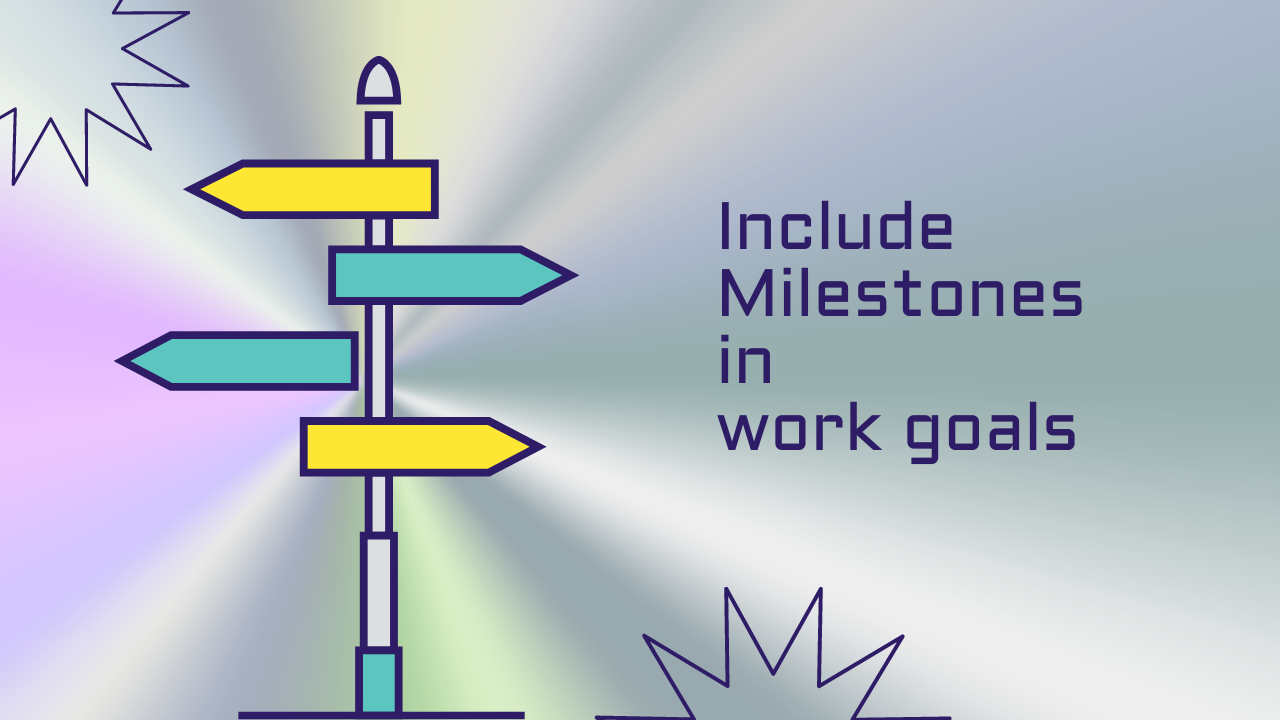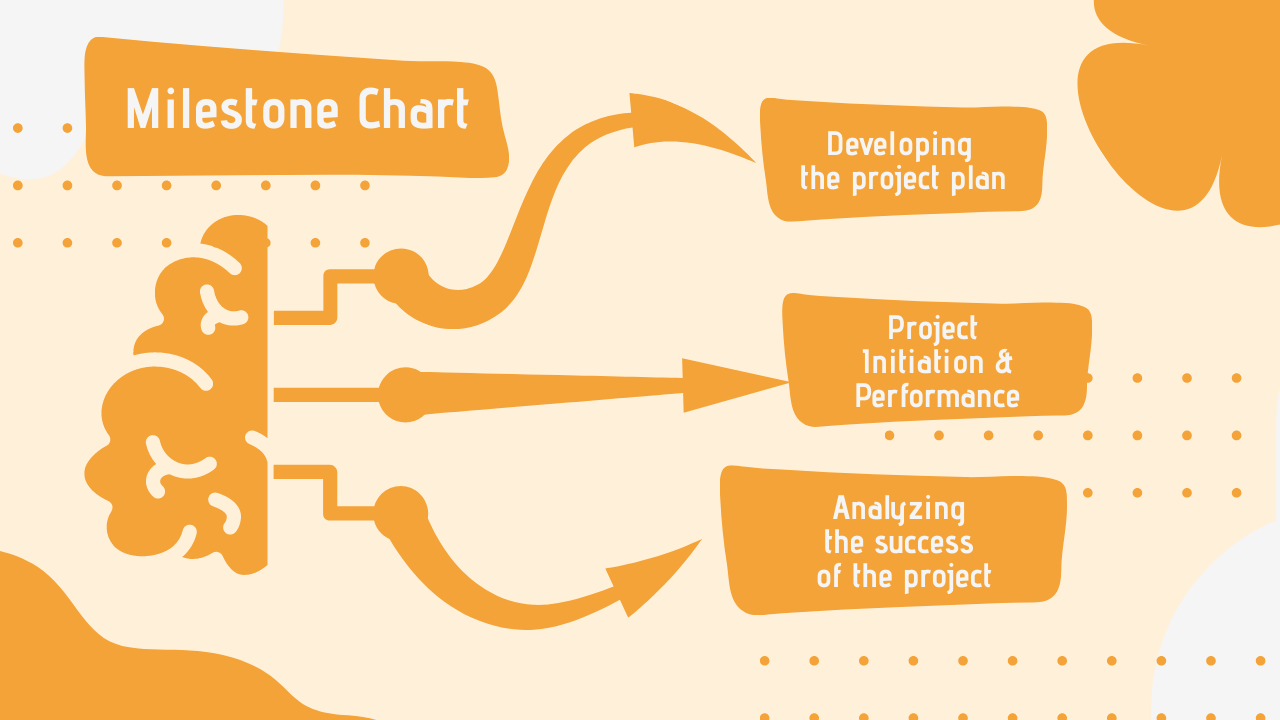The Benefits of Setting Milestones to Reach Work Goals
Reach your work goals faster and more effectively with milestones. This helpful post provides strategies and actionable steps to help you set milestones that will keep you on track and motivated to reach your goals.

Do you ever feel like you're just spinning your wheels at work? You know what you want to accomplish, but it feels like no matter what you do, it's never enough.
If this sounds familiar, you may be suffering from the "churn" problem: you are in the endless cycle of working hard but never getting anywhere. This can happen when our goals are too big — or too vague — to reach.
The solution? Setting milestones to achieve those goals!
What Are Milestones In Goal Setting🔍
Backstory: The concept of setting milestones at work was first presented by Peter Drucker in 1954.
Drucker was a pioneer in the field of management and is credited with introducing the idea of creating goals and milestones to measure progress in the workplace.
He believed that setting goals and milestones was an important part of effective management that ensures completing projects on time and within budget.
Milestones are little steps along the way that help us keep track of how much progress we're making toward our long-term goal.
They can be anything from a daily reminder to take a break or an end-of-week review of how well you've been sticking to your schedule.
When we highlight benchmarks for ourselves each day/week/month;
- it helps you stay focused on what matters most
- it gives you a sense of accomplishment when you check your tasks off your list.
Bottom Line: Milestones at work are necessary if you want to stay on track and accomplish your objectives. By milestones, we mean short-term achievements.
A milestone goal is a specific, measurable, and achievable target that footprints a major step toward the completion of a larger goal.
What Does Reaching A Milestone Mean🎯
Milestones are ideal units to measure progress toward completing a larger, more complex goal, give us a sense of accomplishment, and help motivate us.
Hence, reaching a milestone usually means arriving at a significant point or completing a project. It can refer to both personal and professional achievements.
Milestones often represent a major step forward and can be a source of pride and success.
In relation to work, it can be anything from getting a promotion or starting a business to launching a successful product.
Even in small strokes, milestones are inspiring. Since they are set on a daily, weekly, monthly, and annual basis, reaching them refers to the evaluation of performance and progress.
Why Is It Helpful To Include Milestones When Setting Work Goals🔢
Without milestones, completing tasks and projects can become so draining that it makes work seem pointless.
Breaking down big goals into smaller, more achievable tasks can be really helpful. It makes it easier to keep track of your progress and make it sustainable. Having a clear plan of action makes it easier to take a step-by-step approach, and stay organized.

Plus, you can plan ahead for any potential roadblocks and tweak your strategy if needed. By doing this, you'll have a sense of control over the outcome. When you reach each milestone, it's a great feeling of accomplishment that helps focus on the end goal.
Aside from maintaining our motivation, milestones also serve as a way to evaluate our progress and review our performance. By setting deadlines and living up to professional expectations with unobtrusive time tracking, you can stay motivated and hold yourself accountable for meeting your goals.
Can Milestones Be Negative❌
Milestones are markers used to measure progress and success in a project, task, or goal. They are used to set objectives, track performance, and measure success.
Milestones are typically related to a variety of key elements, including:
- time frames
- budgeting
- quality
- customer satisfaction.
Milestones are set to give a clear indication of the progress made and the work that needs to be done to reach the desired goal.
These factors indicate that milestones are positive, and the concept of using them comes down to motivation and encouragement of progress. A negative milestone would be counter-productive as it cannot provide any useful insights into progress and success.
Benefits Of Milestones In Project Management🌟🌟🌟
Milestones are important in project management as they offer a way to assess development and identify areas of improvement.
Milestones also help to set expectations and give a sense of accomplishment to the team. In project management, milestones:
- help track progress
- ensure that all the tasks are completed on time
- help identify risks and potential problems before they become too large to handle.
- can be used to motivate the team
- keep team members focused on the project's final goals.
Milestones can be used as an effective way of measuring the success of a project, providing feedback on the performance of team members, and setting expectations. Ideally, choose a project management platform that allows you to set up milestones.
How Project Milestones And A Vision Work Together🏆
Milestones and vision work together to create a roadmap for success. Milestone goals are specific, measurable objectives that are used to keep tabs on how far you've come.
A vision is a long-term, aspirational view of what the business outcome should look like. It is the big-picture idea that guides the organization's strategy and provides motivation to achieve project milestones.
When creating milestones, use guidelines for setting SMART goals. Make them realistic and achievable. It’s vital you set attainable goals that are both challenging and inspiring. This way, you can stay motivated and get a real reason to celebrate your accomplishments along the way.
Goals bring structure and direction to vision, while the vision provides the inspiration and motivation to achieve the goals. Together, they create a powerful combination that can help organizations reach their desired outcomes.
Advantages Of Milestone Chart🔔

Milestones are checkpoints throughout the project's progress that are important to note. That's why milestones are included in project planning and presented in a milestone chart.
If you're just focused on the end result, like "completing a project", it can be easy to get discouraged due to lack of clarity. A milestone chart helps to set smaller goals along the way and celebrate each reached a milestone.
It contains answers to multiple questions. When does the project start and finish? What do we need to deliver? Who do we need to get approval from? What meetings and presentations are important? Are there any dates or outages that might mess with our timeline?
Examples of Milestone Chart🎬
Typically, a software development project can include the following milestones:
- Developing the project plan
- Setting up project resources
- Project Initiation
- Coding the software
- Testing the software for bugs
- Launching the software to the public
- Monitoring performance
- Refining the software based on user feedback
- Updating the software as needed
- Finalizing product documentation
- Analyzing the success of the project
- Closure and archiving of project records.
In particular, developing the project plan as a milestone indicates that a project manager created a scope statement including a WBS (Work Breakdown Structure), a project timeline, a project schedule and deadlines, a budget, and a list of the resources required for the project.
Bottom Line: A milestone chart is an important component of project management. Milestones denote significant achievements or points along the project timeline that need to be met in order to reach the overall goal. Furthermore, they provide tangible evidence that the project is progressing successfully.
Concluding Thought⌛

The advantages of setting milestones to attain professional objectives are manifold. These checkpoints can keep you motivated and give you something to be proud of, as long as you make sure your goals are realistic, attainable, and time-bound.
Evidently, such markers of success provide clarity and focus. Also, they serve to demarcate the progress of a project, allowing for the tracking of incremental success and the course correction of any possible shortcomings.
Additionally, such milestones enable a greater level of professionalism, allowing for the systematic completion of tasks and the achievement of project goals in a timely, efficient fashion.

